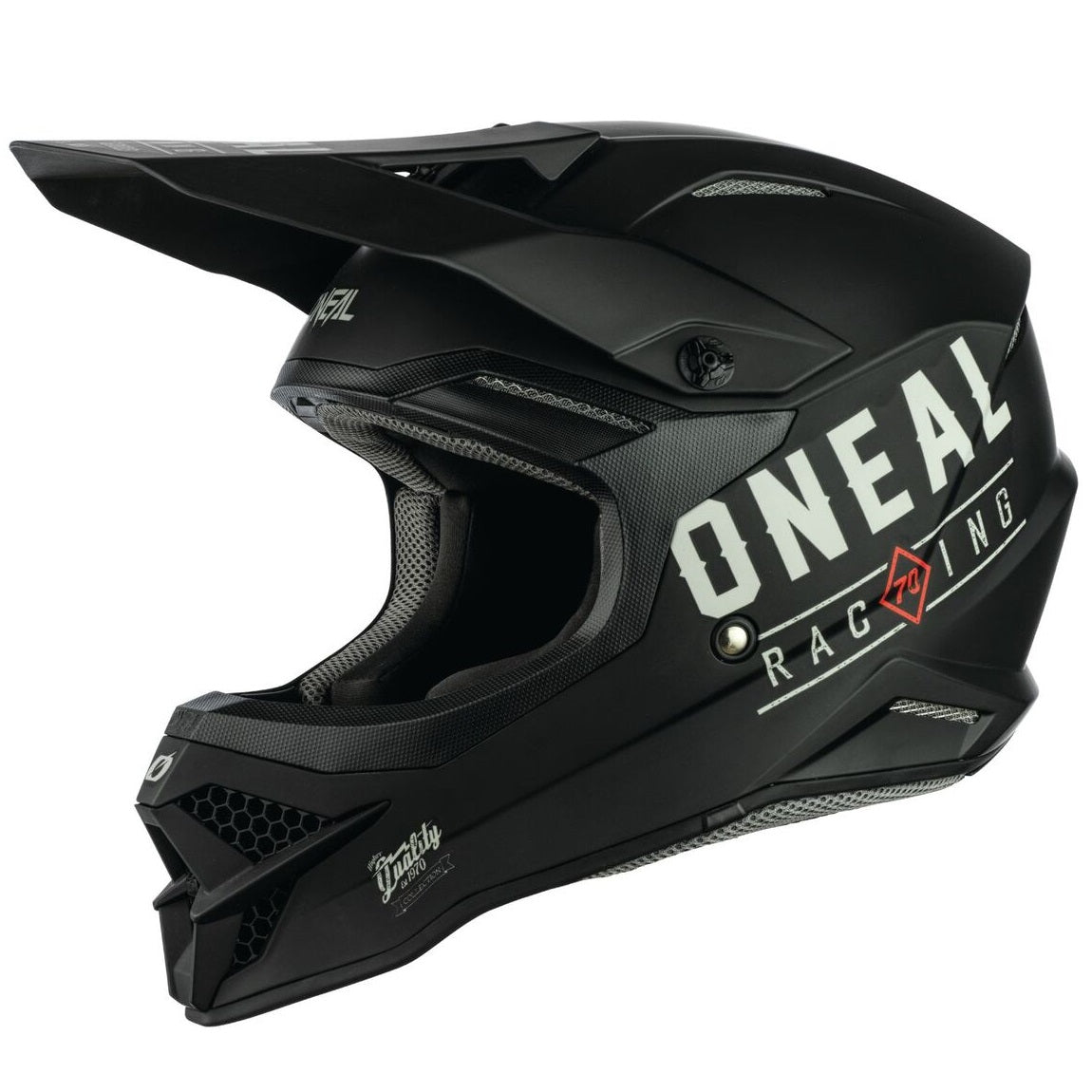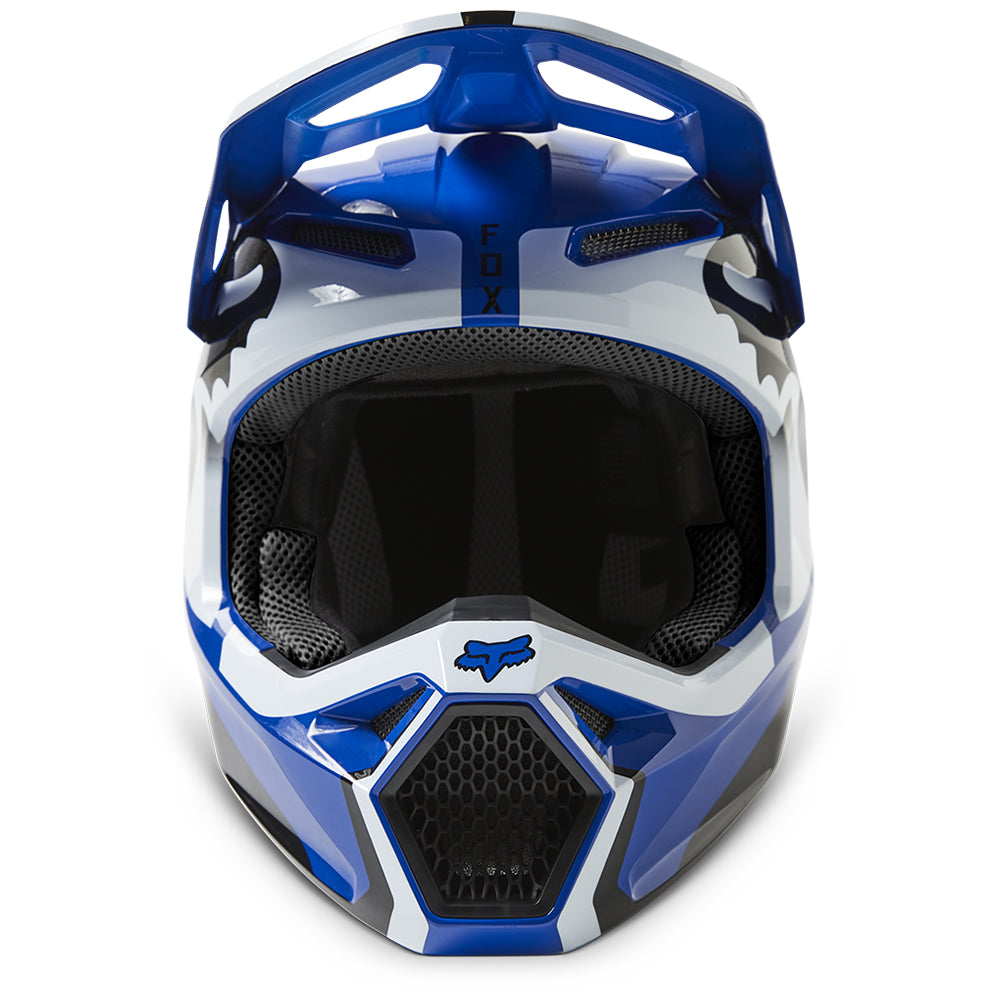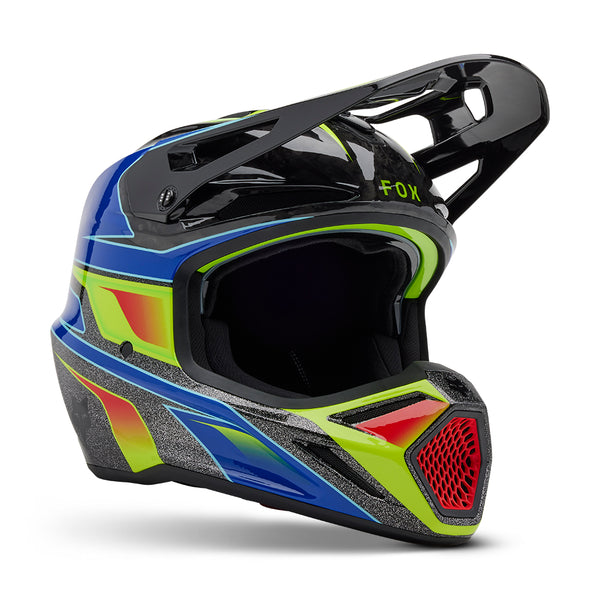Your Overview to Picking a Lightweight and Resilient Motocross Safety helmet
Choosing the appropriate motocross helmet is a vital decision that balances performance, safety and security, and convenience. A lightweight design can significantly enhance your riding experience, yet it needs to not endanger sturdiness or safety features. Comprehending the different products and security modern technologies readily available is crucial for making an educated option. Furthermore, proper fit and air flow play essential duties in ensuring that your headgear serves its objective successfully. As we check out the ins and outs of safety helmet selection, you might discover that the best combination of features can not just raise your safety but likewise transform your time on the track.
Relevance of Helmet Weight
The weight of a motocross safety helmet plays an essential duty in both biker convenience and performance. A lighter helmet can considerably improve a rider's experience, minimizing exhaustion during long trips or races. When the headgear is exceedingly heavy, it can bring about neck pressure and pain, which might interfere with the biker's emphasis and general control. As a result, selecting a lightweight helmet is crucial for keeping optimum efficiency on the track.
In addition to convenience, the weight of the helmet can influence the rules of aerodynamics. Light-weight materials made use of in safety helmet building and construction, such as advanced compounds and polycarbonate blends, frequently offer superior security without giving up comfort.
It is also worth keeping in mind that the balance of the helmet plays an essential duty in total security. A well-balanced helmet distributes weight equally, enhancing the cyclist's ability to maintain a low center of gravity and perform doglegs. In recap, helmet weight is an essential factor to consider for motocross riders, impacting both comfort and performance on the track.
Secret Safety And Security Attributes
Because the main purpose of a motocross headgear is to shield the rider, recognizing key security attributes is essential for making an enlightened choice. One of the most essential aspects of safety helmet security is the influence absorption capability, which is generally achieved through an expanded polystyrene (EPS) foam lining. This foam presses upon influence, decreasing the pressure transferred to the head.
An additional essential safety feature is the helmet's retention system, that includes the chin band and clasp. A safe and secure retention system guarantees that the headgear stays in position throughout a crash, substantially improving protection. In addition, numerous safety helmets come equipped with MIPS (Multi-directional Effect Security System) innovation, developed to minimize rotational pressures during tilted effects, therefore decreasing the risk of mind injuries.
Air flow is additionally a security consideration; while it primarily attends to comfort, correct airflow can prevent heat-related tiredness, which can impair a biker's efficiency and response time. Lastly, make certain that the safety helmet meets security accreditations like DOT, ECE, or Snell, as these requirements suggest that the headgear has undergone extensive screening to ensure its safety capabilities. Prioritizing these key safety features can improve your riding experience while guarding your health.
Products and Building
Choosing a motocross headgear includes not just considering security functions yet additionally comprehending the materials and building that contribute to general performance and defense. The key product utilized in headgear construction is polycarbonate or fiberglass, both of which offer a desirable equilibrium in between weight and resilience. Polycarbonate safety helmets are often lighter and a lot more budget friendly, while fiberglass choices give boosted stamina and impact resistance.
The covering building and construction plays a vital role in energy dispersion throughout impacts. Multi-layer layouts, frequently making use of a mix of products, can successfully take in and dissipate pressures, lowering the risk of head injuries. Some premium versions incorporate carbon fiber, which considerably decreases weight without compromising architectural honesty.
Inside, the safety helmet's cellular lining is generally made from expanded polystyrene (EPS), which is designed to absorb shock. Modern safety helmets might include several thickness EPS, optimizing power absorption throughout a variety of impact situations. In addition, advanced ventilation systems are integrated into the style to boost airflow, keeping the motorcyclist cool throughout extreme trips.

Fit and Comfort
Achieving the best fit is important for a motocross safety helmet, as it straight affects both safety and security and comfort during trips. A well-fitted safety helmet minimizes movement and see here decreases the threat of injury in the occasion of a collision.
When trying on a safety helmet, it is vital to check for a tight yet comfortable feel. The helmet must not develop stress factors, however it should additionally not be loosened adequate to shift during motion. An excellent examination is to relocate the helmet side to side and backwards and forwards; it needs to continue to be in location without excessive movement. In addition, the padding needs to adapt to the form of the head over time, giving convenience on longer rides.
Air flow is one more crucial facet of fit and convenience. Correct air flow can considerably improve cyclist experience by reducing heat accumulation. Eventually, investing time in discovering the best dimension and fit will add to a safer, a lot more enjoyable motocross experience.

Budget Considerations
When buying a motocross safety helmet, bikers have to very carefully review their spending plan to guarantee they find a high quality product that meets security criteria without spending too much. Setting a budget is vital, as costs recommended you read for safety helmets can vary significantly based upon functions, materials, and brand name credibility.
On the reduced end, safety helmets might begin around $100; however, cyclists must beware, as these versions may endanger on security or comfort. Mid-range safety helmets, typically valued between $200 and $400, usually provide an equilibrium of sturdiness, convenience, and advanced safety and security functions, making them a popular option amongst major cyclists.
Premium headgears, priced above $400, often integrate advanced materials such as carbon fiber and considerable air flow systems, offering premium protection and comfort. While investing in a high-end safety helmet can enhance the riding experience, it is crucial to make certain that the additional functions straighten with personal riding needs.

Final Thought
In summary, choosing a light-weight and sturdy motocross safety helmet is necessary for making certain rider safety and comfort. The relevance of safety helmet weight, integrated with vital safety and security attributes such as EPS foam linings and MIPS technology, can not be overemphasized.
Selecting the right motocross helmet is a crucial decision that balances security, performance, and comfort.Considering that the main function of a motocross helmet is to safeguard the rider, understanding vital safety and security functions is vital for making an educated choice. Ensure that the headgear satisfies safety certifications like DOT, ECE, or Snell, as these criteria suggest that the helmet has actually gone through extensive testing to guarantee its protective capabilities.Attaining the best fit is essential for a motocross headgear, as it straight influences both safety and security and comfort throughout experiences.In summary, picking a sturdy and lightweight motocross headgear is necessary for guaranteeing cyclist security and convenience.
Comments on “Motocross Helmet NZ: Leading Features to Look for in Your Following Purchase”